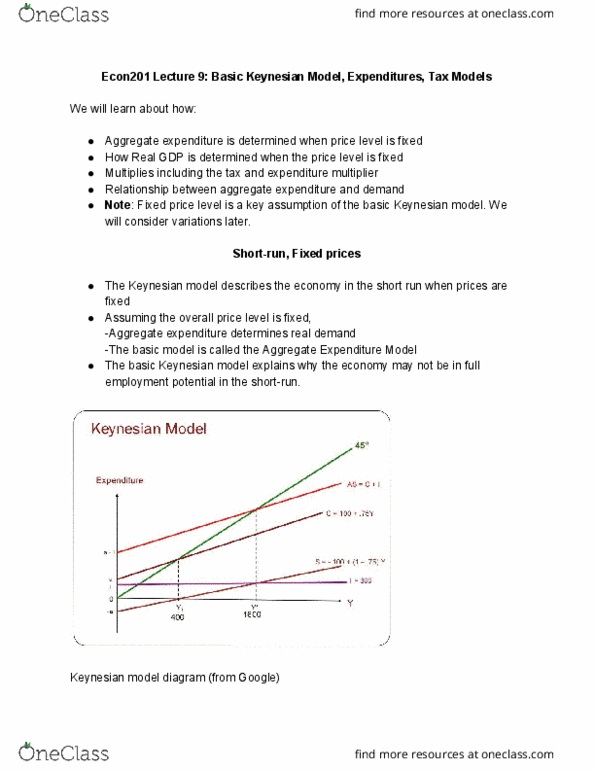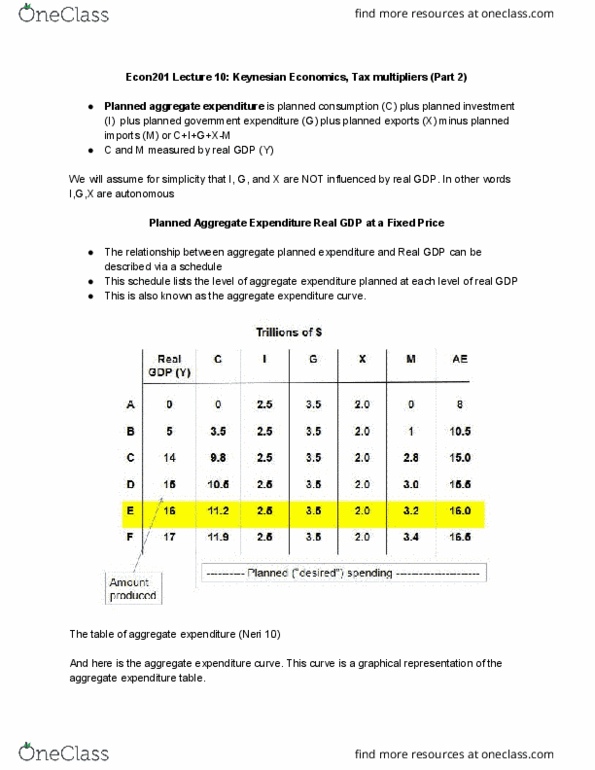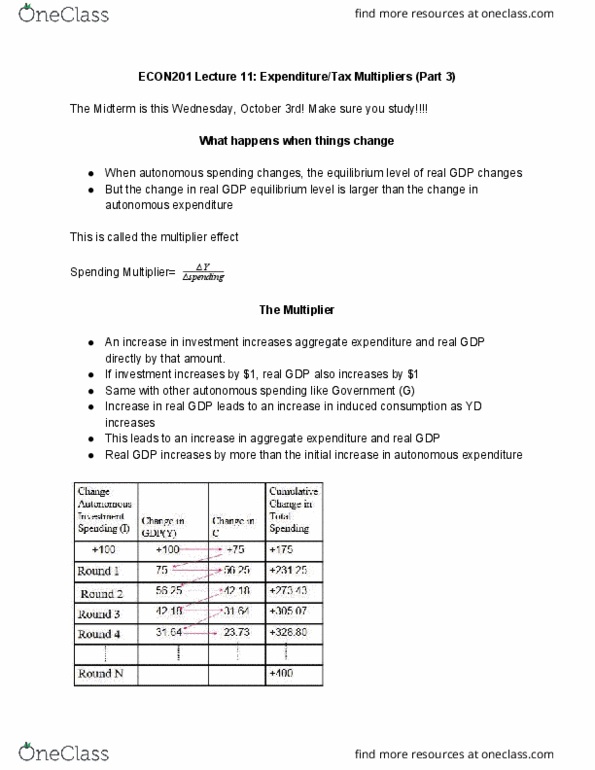ECON 201 Lecture 10: Keynesian Economics, Tax multipliers (Part 2)
Document Summary
Get access


Related Documents
Related Questions
Assume that the equations below describe the expenditures within a particular macroeconomy and that these equations conform to the assumptions we've made in the lecture regarding the fixed price level Aggregate Expenditure model. All values for expenditure and income are dollar amounts, but for simplicity, we've dropped the $ below.
| C = 0.8(DI) + 1000 | C = Consumption expenditure, DI = Disposable Income |
| I = 2000 | I = Investment expenditure |
| G = 1000 | G = government expenditure |
| X = 1600 | X = spending on exports |
| M = 1800 | M = spending on imports |
| DI = Y - T | Y = real GDP, T = tax revenues/> |
| T = 1000 | |
| Yp = 12000 | Yp = Potential GDP |
Given the equations above, we can describe the GDP, government budget, and net exports in this economy. Select three characteristics from the list below which accurately describe this economy. Note that there is no partial credit on this question. I.e., your answer will either be all correct, or all wrong.
| a. |
inflationary gap |
|
| b. |
recessionary gap |
|
| c. |
no output gap |
|
| d. |
government budget surplus |
|
| e. |
government budget deficit |
|
| f. |
balanced government budget |
|
| g. |
trade deficit |
|
| h. |
trade surplus |
|
| i. |
net exports of zero |
| a) | In the AD-AS model, stagflation does not persist, because the working of the self-correcting mechanism of the economy _____ the level of output and _____ the price level until the economy eventually returns to a long-run equilibrium state, where actual output _____ potential output.
|
| b) | The LRAS curve is drawn as a vertical line at potential output (Y*) to indicate that
|
| c) | Stagflation arises in the context of the AD-AS model when some external factor causes
|
| d) | If the SRAS curve is positively sloped, then a decrease in the demand for Canadian-made goods in Europe will lead to _____ in the price level, in the short run.
|
| e) | Which of the following will shift the aggregate demand curve to the right?
|
| f) | Suppose a stock market crash decreases the stock of household wealth and therefore causes autonomous consumption to fall. Which of the following is the likely result?
|
| g) | An economy is characterized by the AD equation P = 200 ? 0.02Y, SRAS equation P = 100 and LRAS equation Y* = 5000. In the absence of any change in policy or exogenous shocks, this economy will achieve a long-run price level of
|
| h) | The AD-AS model depicts a self-correcting economy. This means that the price level in the model adjusts automatically in response to a(n) _____ gap, so as to eliminate the _____ gap in the long run, without requiring any help from government policies.
|
| i) | The aggregate demand curve shows
|
| j) | Consider an economy initially at long-run equilibrium with output (Y) equal to potential output (Y*). If the SRAS is positively sloped, then a shift to the right of the AD curve will lead to _____ in the price level, in the short run. In the long run, the SRAS curve will shift to the _____ and the equilibrium will be at __________.
|



